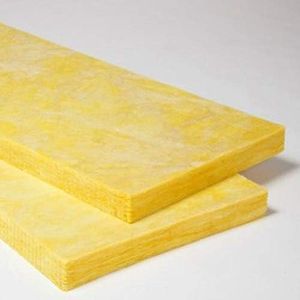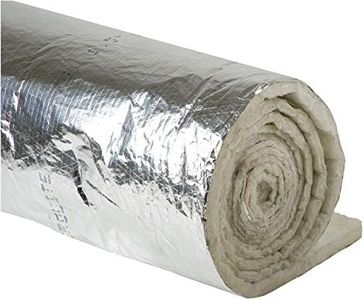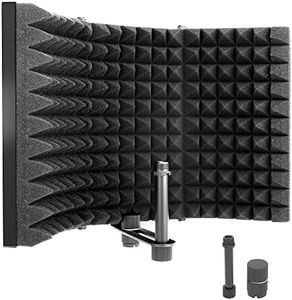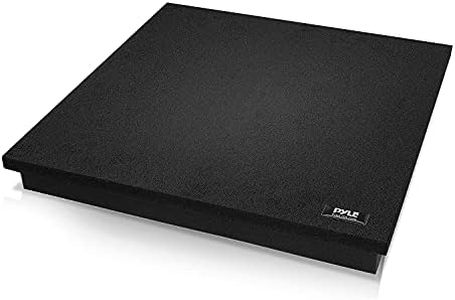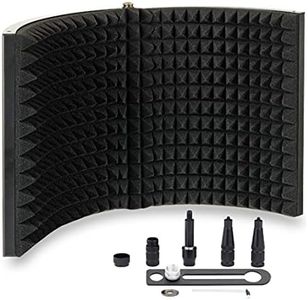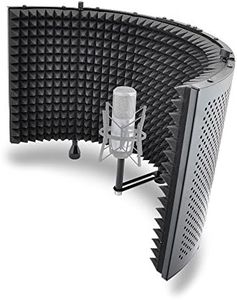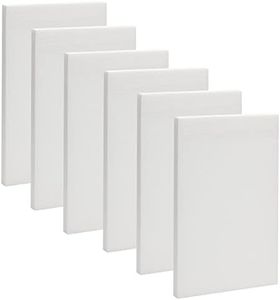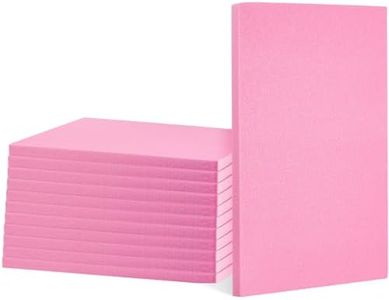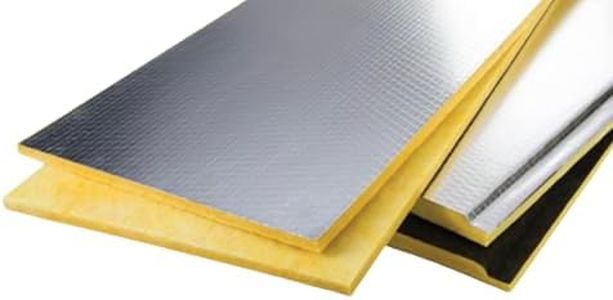9 Best Foam Board Insulation 2025 in the United States
Our technology thoroughly searches through the online shopping world, reviewing hundreds of sites. We then process and analyze this information, updating in real-time to bring you the latest top-rated products. This way, you always get the best and most current options available.

Our Top Picks
Winner
Owens Corning 703 Rigid Fiberglass Board 1" Qty 12
Most important from
48 reviews
The Owens Corning 703 Rigid Fiberglass Board is a solid choice for both construction and industrial insulation needs. It has an R-Value of 4.3, which means it provides good heat resistance and can help lower energy costs. Measuring 1 inch thick, the boards are not too bulky but still provide effective insulation. They also have a respectable Noise Reduction Coefficient (NRC) of 0.7, making them suitable for soundproofing in applications like professional studios or DIY projects.
A significant advantage is its fire rating; it meets Class A or Class 1 per ASTM E84 standards, making it a safe option in terms of fire resistance. The boards are also eco-friendly, containing about 53% recycled glass content, which is a plus if you're looking for sustainable options. However, one area where it could be improved is its moisture resistance. Being fiberglass, it isn’t as moisture-resistant as some foam boards, which might be a consideration in very humid environments.
Additionally, while it offers good compressive strength, it's not as robust as some other materials like extruded polystyrene. Therefore, it might not be the best choice for areas with very high load demands. Despite these drawbacks, its sound absorption capabilities and fire safety features make it a versatile and reliable product for a range of insulation needs.
Most important from
48 reviews
Duct Insulation, 1-1/2In x 48In x 25Ft
Most important from
157 reviews
The Johns Manville Duct Insulation is a fiberglass-based product designed primarily for thermal insulation. It boasts an R-value of 4.2, which indicates decent thermal resistance, making it effective for maintaining temperature control. The material is fiberglass, known for its good insulating properties, though it can be irritating to handle without proper protection. The thickness is 1.5 inches, providing a good balance between insulation and space efficiency.
The product comes in a substantial roll covering 100 square feet, which can be practical for large projects. It features a foil scrim kraft jacket that adds to its moisture resistance, although fiberglass can still be vulnerable to moisture over time if not properly sealed. The fire rating meets several standards (ASTM, UL, NFPA), ensuring it offers a degree of safety against fire hazards.
The environmental impact of fiberglass may be a concern due to its production process and recyclability. The fiberglass generally provides moderate compressive strength, suitable for duct insulation purposes.
Most important from
157 reviews
Owens Corning 705 Rigid Fiberglass Board, 1 Inch (8PK)
The Owens Corning 705 High Strength Rigid Fiberglass Board offers a solid option for those looking for both thermal and acoustic insulation. With an R-Value of 4.3, it effectively reduces heat transfer, potentially lowering energy costs. Its Noise Reduction Coefficient (NRC) of 0.75 makes it superior in sound absorption, ideal for use in professional studios or home theaters.
The fire rating of Class A or Class 1 per ASTM E84 adds a layer of safety, making it suitable for various construction applications. Additionally, these boards are made from 53% recycled glass, which is a plus for environmentally conscious consumers.
It's important to note that the 1-inch thickness may not provide as much insulation as thicker options, especially in extremely cold climates. The product's weight and size might make it cumbersome to handle and install for some users. This product suits those needing efficient thermal and acoustic insulation with a focus on fire safety and environmental impact.
Buying Guide for the Best Foam Board Insulation
Foam board insulation is a popular choice for insulating homes and buildings due to its high insulating value and ease of installation. When choosing foam board insulation, it's important to consider several key specifications to ensure you select the right product for your needs. Understanding these specifications will help you make an informed decision and achieve the best thermal performance for your project.FAQ
Most Popular Categories Right Now


